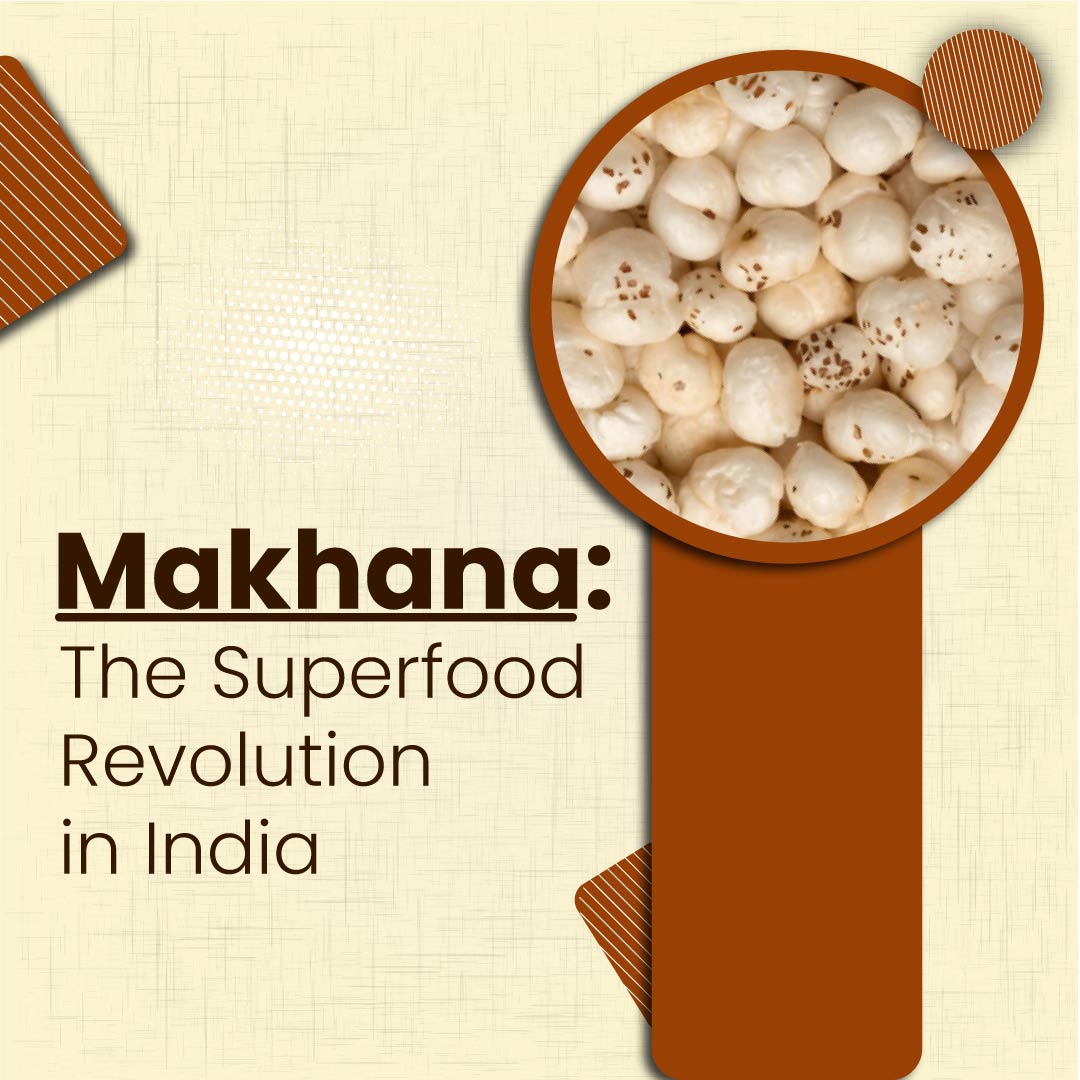Table of Contents
- Introduction to Makhana
- History and Origin of Makhana
- Nutritional Profile of Makhana
- Health Benefits of Makhana
- Makhana and Ayurveda
- Makhana as a Superfood
- How Makhana is Cultivated
- Makhana Farming in India
- Processing and Production of Makhana
- Different Varieties of Makhana
- How to Include Makhana in Your Diet
- Traditional Uses of Makhana in India
- Modern Recipes Using Makhana
- Makhana vs. Other Superfoods
- Makhana for Weight Loss
- Makhana for Heart Health
- Makhana for Diabetes Management
- Makhana for Skin and Hair
- Makhana in the Indian Economy
- Export Potential of Makhana
- Makhana Brands in India
- Challenges in Makhana Production
- Sustainability and the Future of Makhana
- Frequently Asked Questions (FAQs)
- Conclusion
Introduction to Makhana
Makhana, also known as fox nuts or lotus seeds, has gained immense popularity in India as a superfood. Rich in nutrients and packed with health benefits, makhana is an essential part of Indian cuisine and Ayurveda.
History and Origin of Makhana
Makhana has been cultivated in India for centuries, primarily in Bihar, where it is grown in water bodies. Its use dates back to ancient times when it was consumed for its medicinal properties and religious significance.
Nutritional Profile of Makhana
Makhana is low in calories and high in essential nutrients such as:
- Protein – Helps in muscle growth
- Fiber – Aids digestion
- Calcium – Strengthens bones
- Antioxidants – Fights free radicals
- Magnesium & Potassium – Supports heart health
| Nutrient | Amount per 100g |
|---|---|
| Calories | 347 kcal |
| Protein | 9.7g |
| Carbohydrates | 76.9g |
| Fiber | 14.5g |
| Fat | 0.1g |
| Calcium | 60mg |
| Iron | 1.4mg |
Health Benefits of Makhana
1. Aids Weight Loss
Makhana is a low-calorie snack that keeps you full longer, reducing overall calorie intake.
2. Boosts Heart Health
Rich in potassium and low in sodium, makhana helps regulate blood pressure and reduces cholesterol.
3. Manages Blood Sugar Levels
Its low glycemic index makes it an ideal food for diabetics.
4. Enhances Bone Strength
High calcium content helps in bone health, reducing the risk of osteoporosis.
5. Improves Digestion
Fiber-rich makhana supports a healthy gut and prevents constipation.
6. Anti-Aging Benefits
The antioxidants in makhana help slow down the aging process by fighting free radicals.
Makhana and Ayurveda
In Ayurveda, makhana is considered a “sattvic” food that enhances vitality, promotes mental clarity, and improves overall well-being. It is often recommended for those recovering from illness.
Makhana as a Superfood
Makhana has gained international recognition as a superfood due to its high nutrient density, gluten-free nature, and numerous health benefits.
How Makhana is Cultivated
Makhana is cultivated in ponds, lakes, and wetlands. The process involves:
- Collecting the seeds from water bodies
- Sun-drying them
- Roasting and popping them to produce edible makhana
Makhana Farming in India
India is the largest producer of makhana, with Bihar accounting for over 80% of the total production.
Processing and Production of Makhana
After harvesting, makhana seeds undergo roasting at high temperatures. They are then manually popped to remove the outer shell.
Different Varieties of Makhana
- Raw Makhana – Used in traditional cooking
- Roasted Makhana – Consumed as a snack
- Flavored Makhana – Available in various flavors like cheese, masala, and caramel
How to Include Makhana in Your Diet
- Makhana snacks
- Makhana porridge
- Makhana curry
- Makhana desserts
Traditional Uses of Makhana in India
Makhana is widely used in religious rituals, fasting, and festive cooking in India.
Modern Recipes Using Makhana
- Spicy roasted makhana
- Makhana kheer
- Makhana chaat
Makhana vs. Other Superfoods
Compared to chia seeds and quinoa, makhana is more affordable and locally available, making it a superior superfood option in India.
Makhana for Weight Loss
Rich in fiber and protein, makhana aids in weight management by reducing hunger pangs.
Makhana for Heart Health
Lowers bad cholesterol and supports cardiovascular health.
Makhana for Diabetes Management
With its low glycemic index, makhana prevents blood sugar spikes.
Makhana for Skin and Hair
The antioxidants in makhana promote glowing skin and healthy hair.
Makhana in the Indian Economy
The makhana industry provides employment to thousands of farmers and workers in India.
Export Potential of Makhana
Makhana is now being exported globally, with increasing demand in countries like the USA and UK.
Makhana Brands in India
Popular makhana brands include:
- Too Yumm!
- Makhanawala
- Roasty Tasty
Challenges in Makhana Production
Challenges include high labor costs, lack of mechanization, and limited awareness.
Sustainability and the Future of Makhana
Efforts are being made to improve mechanized farming and increase global reach.
Frequently Asked Questions (FAQs)
1. Is makhana good for daily consumption?
Yes, makhana is safe and healthy for daily intake in moderate amounts.
2. Can makhana help in weight loss?
Yes, due to its low calorie and high fiber content.
3. Is makhana better than popcorn?
Yes, makhana is healthier than popcorn as it is naturally low in fat and sodium.
4. Does makhana have any side effects?
Excessive consumption may cause bloating or digestive discomfort.
Conclusion
Makhana is truly a superfood that has gained immense popularity in India and beyond. Its health benefits, affordability, and versatility make it a must-have in every household. Whether for weight loss, heart health, or diabetes management, makhana is a game-changer in the world of nutrition.
Let’s embrace the Makhana Revolution and make healthier choices!
